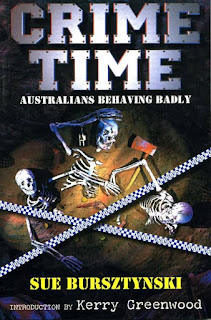Back in the 1990s, I wrote my second book, Potions To Pulsars: Women Doing Science, a children’s book about the history of women who have made a difference to discovery and invention over the centuries. Many of them had to do it in secret or in surroundings that didn’t give them the equipment they needed. Some of them - like Rosalind Franklin, the heroine of the play I’ve just gone to see - were hidden from history while males got the credit. It’s not that there weren’t books that included them. In fact, when I was researching Rosalind Franklin for my own book, I read a bio of her, written by a cousin. But you had to know what you were looking for. If you were an ordinary reader, especially a child, you might be under the impression that Marie Curie was the only woman scientist in existence. I’ve recently come across a new children’s book on the history of science and it still only featured Madame Curie! It didn’t even mention that her daughter Irene was also a Nobel Prize winner, or her granddaughter Helene a nuclear physicist.
Fortunately, I’m a librarian. I did know how to look it all up.
I wrote this book in the early days of the Internet, way before Google, so I used the State Library for most of my research. The children’s section of my local library supplied me with general books about science, which I needed as a layman, because you can’t just write biographies without explaining what these women achieved. And yes, I used the Internet about once a week. You had to buy an hour of use at the Internet cafes which were springing up in those days. My book did pretty well, even getting a Notable in the CBCA awards, a shortlisting in the Clayton’s awards and even a short but positive review in New Scientist, plus I got an invitation to speak to a group of high-IQ kids at their Friday night meeting. It was only about a year ago that someone’s children’s book on women in science ended up on the New York Times bestseller list. I admit to grinding my teeth in envy. My book sold about 6-7000 copies in Australia, a respectable number, but hardly NYT bestseller status. If it had been written in the last few years...who knows? It would certainly have been possible to give it more promotion.
 |
| Rosalind Franklin. Wikimedia Commons |
Ada Byron Lovelace, the world’s first computer programmer, now has her own international day in October, and most have heard of Caroline Herschel, astronomer sister of William Herschel, George III’s Astronomer Royal, but even now, when we should know better, we are told all about James Watson and Francis Crick, the “discoverers of the structure of DNA” and not a word about Rosalind Franklin, whose work they used to finish their own and rush into publication ahead of her, gaining them the Nobel Prize, along with her colleague Maurice Wilkins, who showed them the notes they needed to correct the glitch they had made. According to the bio written by Dr Franklin’s cousin, the problem was that she was so careful in her work that she refused to publish till she was absolutely certain. So she died of cancer at the age of 37 and they got the prize, and the only one of the three who bothered to mention her at their Nobel presentation was Wilkins. They don’t give Nobel Prizes posthumously; we’ll never know if she would have been recognised if she had been alive. I’d like to think she would, but possibly not.
So this afternoon I went to see Photograph 51, a play about Rosalind Franklin by Anna Ziegler, at the Fairfax Studio in Melbourne. I see from the play’s Wikipedia entry that the role was first played by Nicole Kidman - wow! This afternoon, however, it was played by local actor Nadine Garner, best known within Australia, and a fine actor. The characters were Rosalind Franklin, Watson, Crick, Wilkins, Ray Gosling, her PhD student, and Don Caspar, an American scientist and admirer who asked her for photographic help in his PhD and came over to work with her. He and Watson are both still alive, as of this writing. I hadn’t realised how very young Watson was at the time, but it explains why he is still around. He is shown as a brilliant but annoying boy child; you just want to stomp on him, especially when he spends a lecture of hers commenting on her appearance instead of listening to her(I think those comments were in his book). Of course, I was biased...
 |
| Rosalind Franklin University Of Medicine And Science, US. Wikimedia Commons |
It was a wonderful afternoon at the theatre and my sister also enjoyed it, though she wasn’t familiar with the story. And I enjoyed it because I was familiar with it!
My book Potions To Pulsars is out of print now, but I recently unearthed several copies. I’ll give away one precious copy to one commenter, using a name-out-of-a-hat method. If you are commenting below, let me know if you’re interested in winning a copy, by saying “Yes, please.” I’ll give it a week before announcing the winner, and as it’s a slim volume you can enter even if you are outside Australia.
Good luck!












